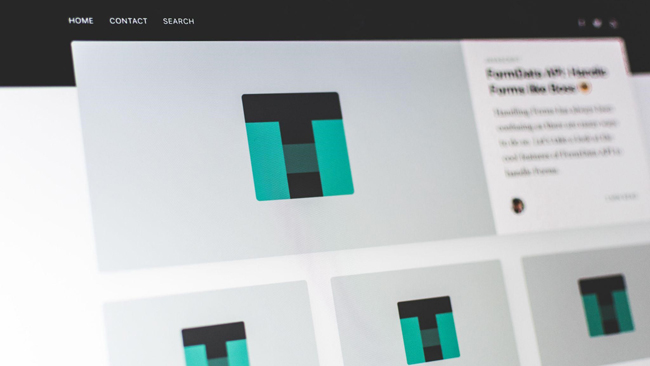In the fast-paced digital world, where online interactions continue to shape consumer perceptions and decisions, having a consistent brand identity across web design elements is crucial. Strong and consistent branding doesn’t merely create a recognizable image; it conveys a company’s mission, vision, and values, influencing how consumers perceive the business.
This article discusses how to maintain consistency in branding across various web design elements, ensuring your brand’s online representation aligns with its real-world identity. It provides insights into the importance of consistency in branding and practical ways to achieve this within the realm of web design.
The Importance of Brand Consistency in Web Design
The Power of a Unified Brand Image
In essence, branding is your business’s personality and image combined. It consists of various elements, including your logo, color scheme, typography, and even the tone of voice in your content.
A consistent brand is like a promise to your customers. It reassures them that they will receive the same level of quality every time they interact with your business. Consistency in branding across web design elements helps create a seamless experience, cementing your brand’s position in the consumer’s mind.
The Role of Web Design in Branding
A company’s website is often the first point of contact for prospective customers. As such, your website design should be an accurate reflection of your brand. It needs to visually communicate your company’s identity and values.
Web design encompasses not just aesthetics but also functionality. An attractive design coupled with seamless navigation contributes to a positive user experience, reinforcing the quality and reliability of your brand.
Practical Ways to Maintain Brand Consistency
Consistent Use of Logo and Favicon
The logo is one of the primary visual elements representing your brand. Its strategic placement on the website helps visitors associate your brand with the content they interact with. Also, the favicon (the tiny icon displayed in browser tabs) should be a miniature version of your logo or relate closely to it.
Uniform Color Scheme and Typography
Color plays a pivotal role in creating an emotional connection with your audience. Maintain a consistent color scheme across all your web pages, reflecting the colors associated with your brand.
Similarly, typography also communicates brand personality. Whether you choose bold, modern fonts or elegant, traditional ones, ensure they remain consistent throughout the website.
Consistent Tone and Voice in Content
Consistency in branding isn’t solely visual. It extends to the tone and voice in your content. Whether it’s product descriptions, blog posts, or customer service responses, maintaining a consistent tone conveys your brand’s personality and values effectively.
Use of Images and Media
Images, videos, and other media should reflect your brand’s personality and enhance the overall aesthetic appeal of your site. Choose visuals that complement your color scheme and overall branding. Avoid media that contradicts your brand’s image, no matter how aesthetically pleasing they might be.
Consistent Navigation and Layout
The layout and navigation of your website contribute to the overall user experience. A consistent, intuitive design helps users find information quickly and efficiently, reinforcing a positive impression of your brand.
Quality and Consistency in Website Design
Creating a quality and consistent website design requires understanding your brand identity and how to translate that into various web elements. Consistent branding reassures your audience about the quality and reliability of your services or products.
However, maintaining consistency doesn’t mean stagnation. As your business grows and evolves, so should your website. Regular updates and refinements help maintain relevance while adhering to the core elements of your brand identity.
Hiring a Web Developer to Maintain Consistency
The expertise of a professional web developer can play a crucial role in maintaining brand consistency across your website. While the importance of a well-designed logo, uniform color scheme, typography, and other brand elements cannot be understated, bringing it all together in a cohesive and user-friendly web design requires specific technical skills.
Web developers, especially those with experience in branding and user experience (UX), can help translate your brand identity into an effective and engaging website. Here’s how a skilled web developer can help uphold branding consistency:
Strategic Placement of Brand Elements: Web developers can ensure your brand elements, like logo and favicon, are strategically placed and displayed consistently across all web pages.
Implementing Brand Colors and Typography: A web developer can accurately implement your brand’s color scheme and typography in the site’s CSS, ensuring it’s consistent across all web pages and different device screens.
Ensuring Consistency in Content Display: How your content is displayed can impact your brand image. Web developers can create a consistent layout for content across your website, including blog posts, product descriptions, and customer service responses.
Selection and Integration of Media: Web developers can help select and integrate media that aligns with your brand personality. They can ensure these media are displayed correctly and consistently across different devices.
Maintaining Website Layout and Navigation: Web developers can create a consistent and intuitive layout and navigation structure for your website, providing a seamless user experience that positively reflects your brand.
Optimization and Updates: Web developers can help ensure your website remains up-to-date as your brand evolves. They can implement changes while maintaining core brand elements, ensuring your website remains relevant and consistent with your brand identity.
The Impact of Consistent Branding in Web Design Elements
Consistent branding across web design elements forms a critical part of effective online marketing. It allows businesses to create a distinct, recognizable identity, strengthening customer relationships and fostering loyalty.
By paying attention to elements like logo usage, color schemes, typography, tone of voice, media usage, and website navigation, businesses can ensure a cohesive, engaging, and reliable user experience that resonates with their brand values.




Leave a comment
Have something to say about this article? Add your comment and start the discussion.